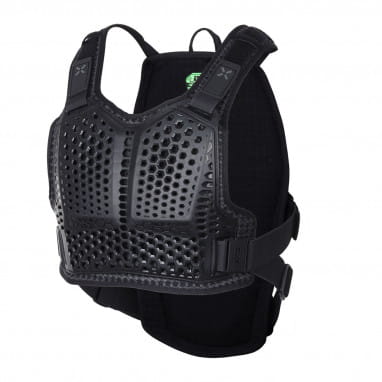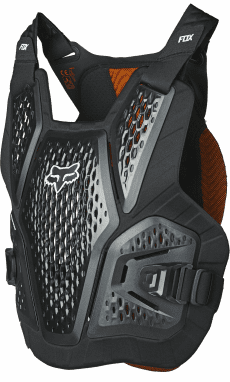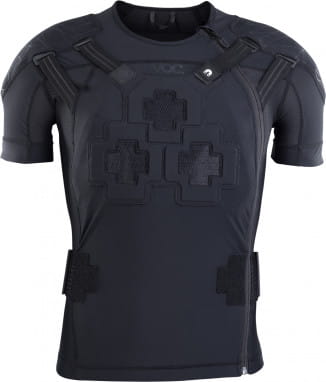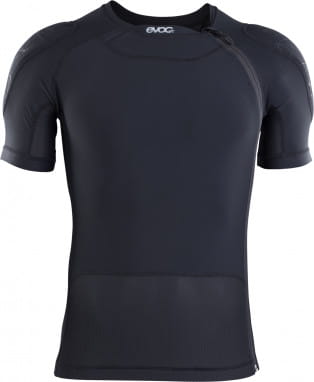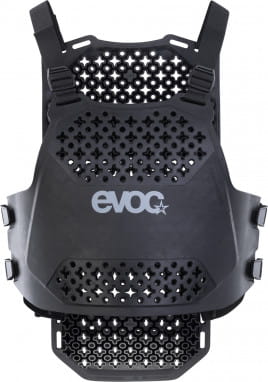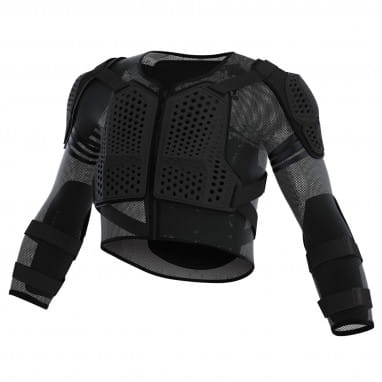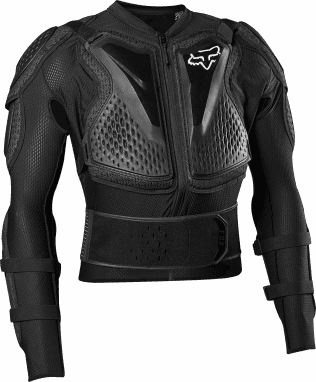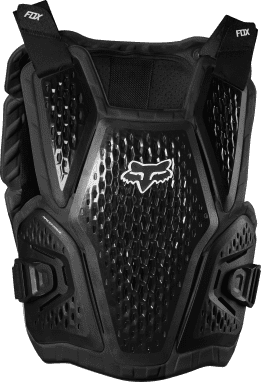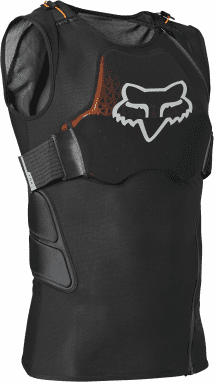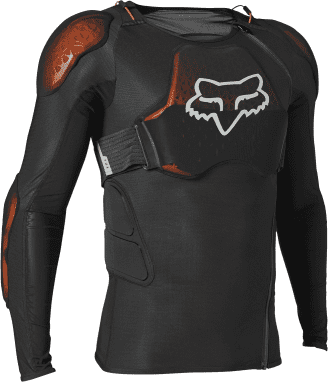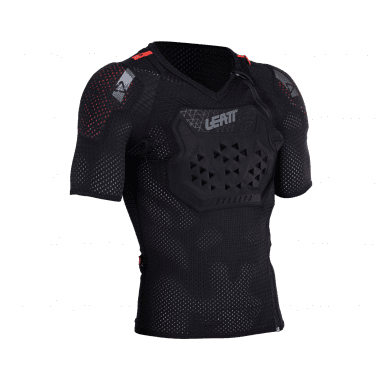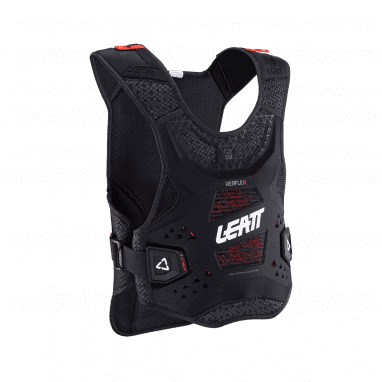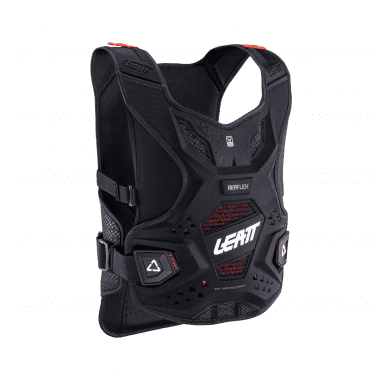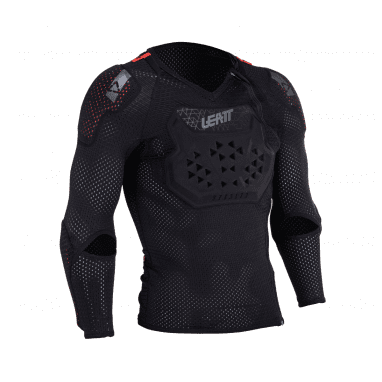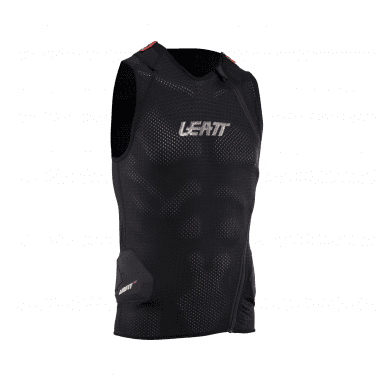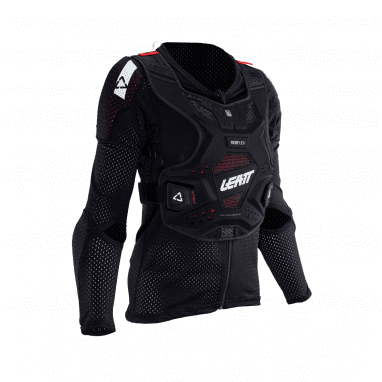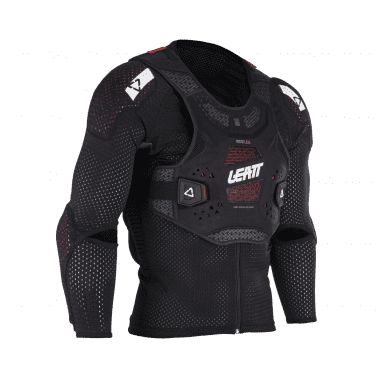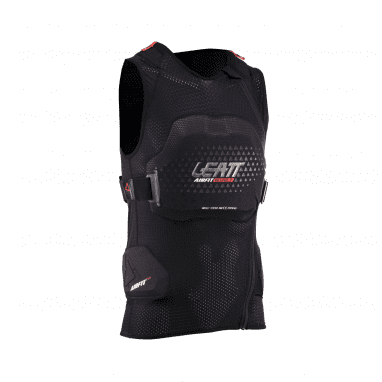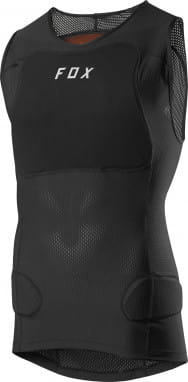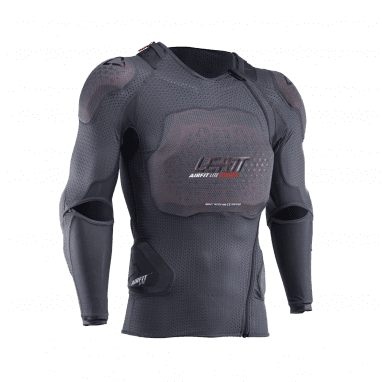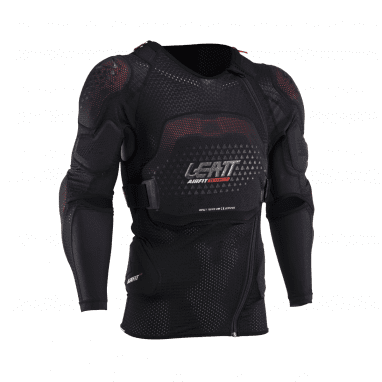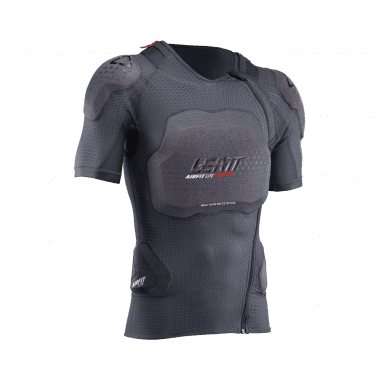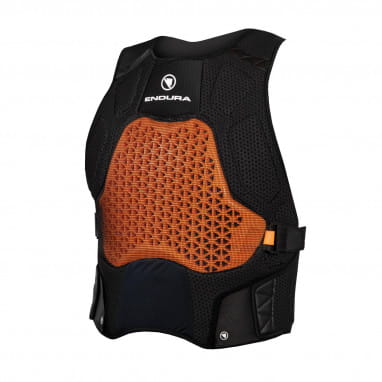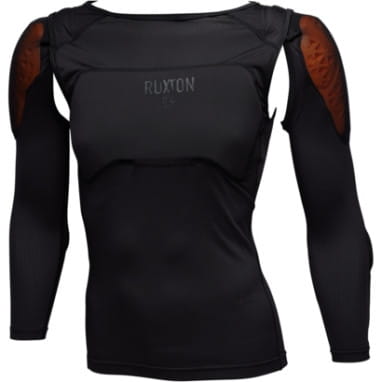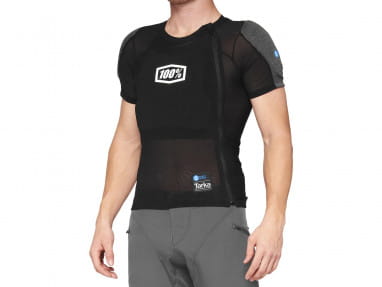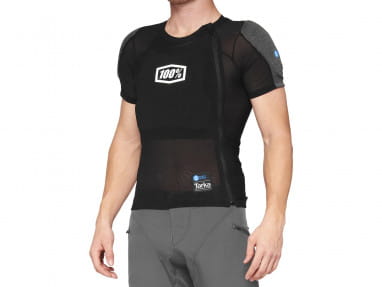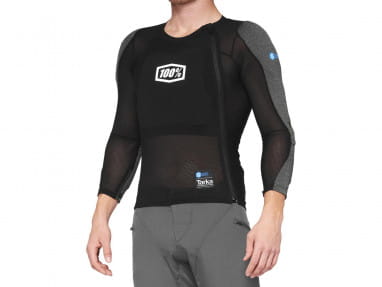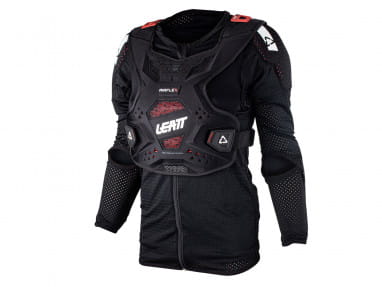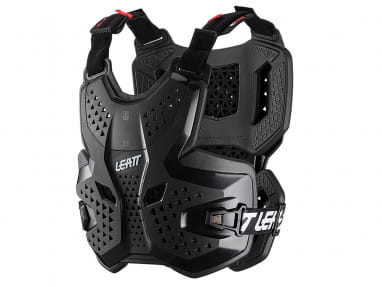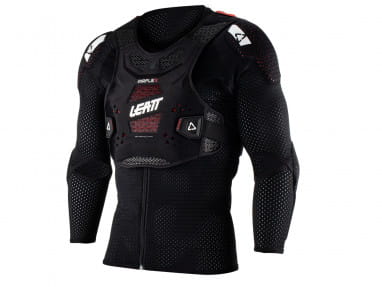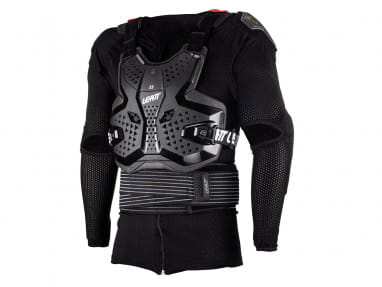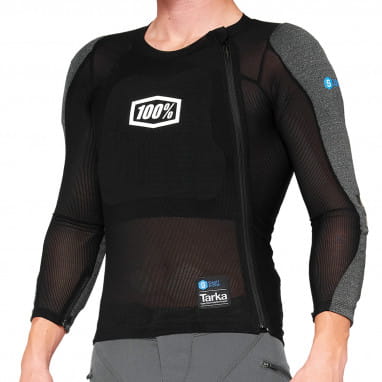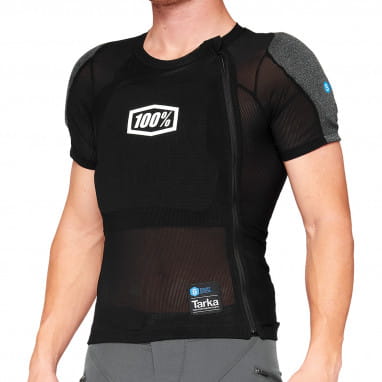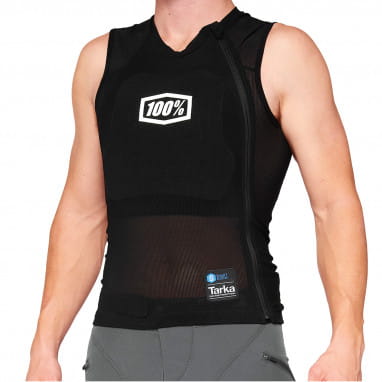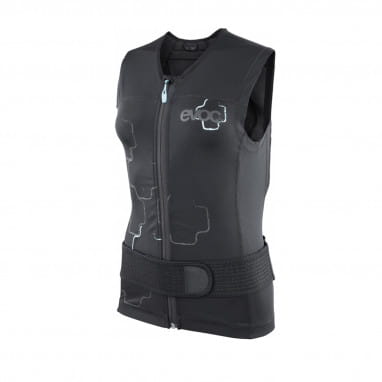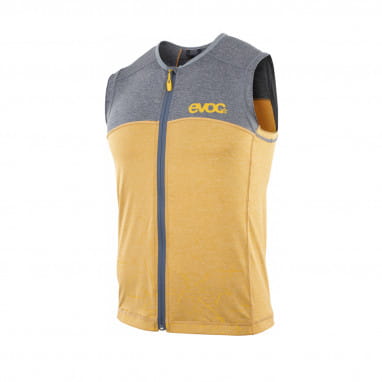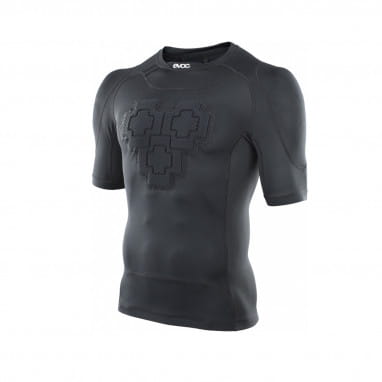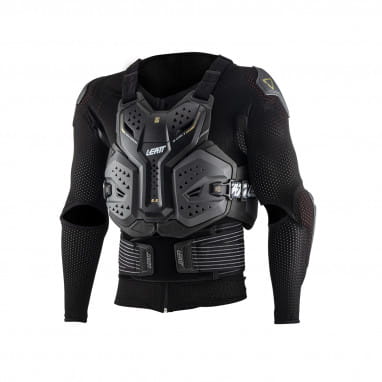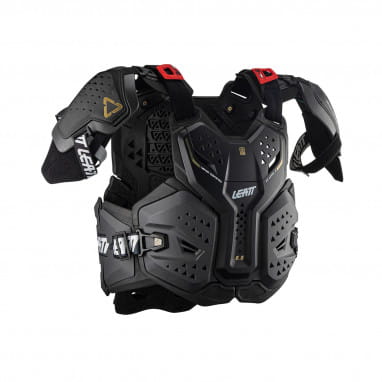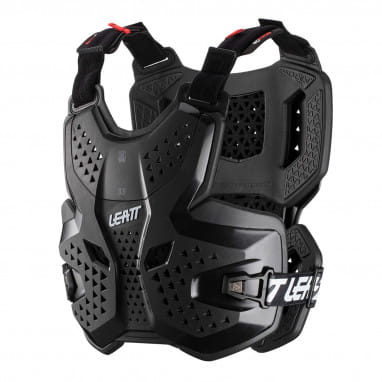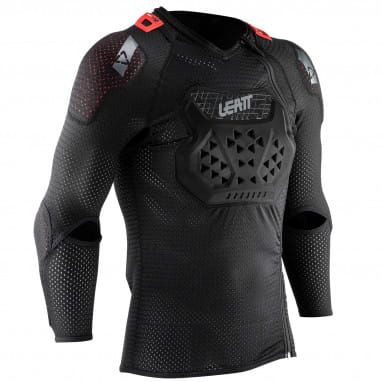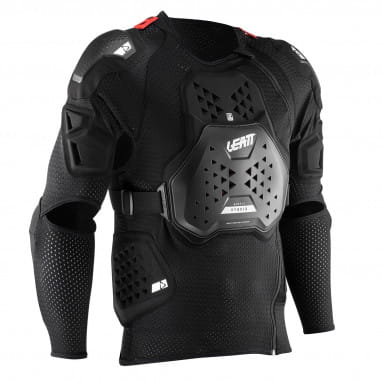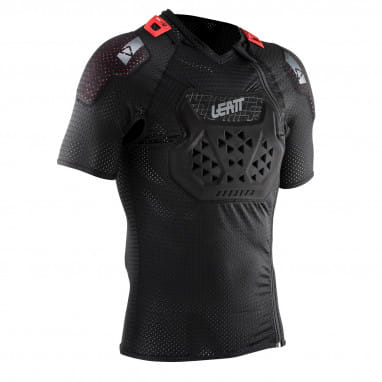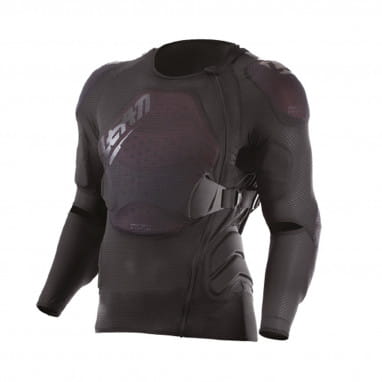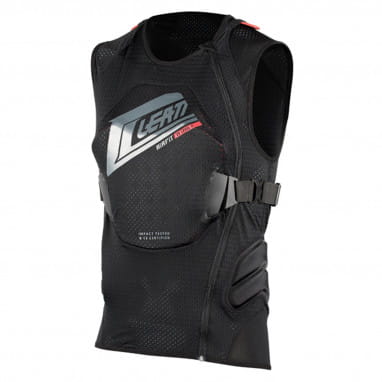In the event of a fall, a jacket with built-in protectors not only protects your spine, but also most of your upper body. In most protective jackets, the shoulders, chest, forearms and elbows are also packed thickly, so falls are cushioned. In our shop you will find light shirts with integrated protective layer for demanding enduro tours, but of course also expansive protector jackets for downhill and freeride use!
Whether you buy a protector jacket or a protective vest, is partly a matter of taste, but partly the decision also depends on your riding style. We'll use the terms interchangeably for now, except in the section "Protector Jackets and Protector Vests". You'll also find the protector jackets called mountain bike vests or MTB jackets, of course that doesn't mean you can't wear them on a BMX or a gravel bike!
You can find this information here:
Don't protector jackets feel goofy?
You may remember your first attempts on inline skates? With a crooked child's helmet and totally embarrassing knee pads with a picture of a grinning dog on them. Plus chafing elbow pads that cut off your arms and wrist cuffs. Then at some point, a well-meaning person told you that they don't protect wrists from breaking at all, they just make sure it's a smooth break that heals well. Well, thank you very much! We understand that you're not actually up for protectors.
But there's a trail out there waiting for you...the mogul slope with the awesome view...the new bowl at the skatepark. Shucking it up there for real, no-holds-barred? Notice how your resistance to protectors is fading?
Today, MTB protectors are sophisticated down to the smallest detail, the wearing comfort improves with each new model. The protector vests are made of elastic fabrics, so you have a lot of freedom of movement. Often there are openings under the arms, which allow you even more room to move, plus they provide good ventilation. Speaking of ventilation: Protector vests are made of breathable fabrics . Many of these are advanced synthetic fibers that actively wick generated sweat to the surface of the protective vest. This technique is called the "wicking effect", and it is commonly used in functional clothing today. It ensures that the skin feels pleasantly dry and the body under the protector does not cool down due to evaporative cooling.
Many of the armored vests are washable, washable or even machine washable, so the odor nuisance is kept at bay.
Strong parts of the protector jackets are interrupted at the joints, so you can bend your arms and move your shoulders freely.
The innovative plastics, foams and fabrics that MTB jackets and vests are made from are also light; so light that at best you just forget about your protective armor.
The fit of the protective vests is also constantly improving. We have them, like all cycling clothing, in different sizes in the online shop, they are available for women, men and children. The more rigid the armored vests turn out to be, the more options they give you to customize and adjust them to your body. You can find out more in the <a href="#ladies">Large, small, ladies, men and kids</a>
Let's briefly recap why mountain bike protector vests just don't feel silly:
- They're flexible, so you can move around just fine despite wearing a protective jacket
- They are breathable; if sweat is pouring out, it's due to the concentrated bike action, not the MTB jacket
- They are (partially) washable
- They are lightweight and therefore comfortable to wear
- there are different fits and sizes
Protector vests protect the upper body during bike crashes
There is now the perfect protective gear for every part of your body. Just as a helmet protects your head, a protector vest prevents bad injuries to your upper body. You can put together your protective clothing according to your needs and combine the protective vest with shin guards, ankle guards and a neck brace. The material and function of the protective components is similar in each case. There are soft cushions that cushion a fall and tough plastic panels that distribute the force of a point impact over a larger area. However, there are different forms that the body crumple zone comes in:
Back protectors
Pure back protectors are held in place with straps around the abdomen and shoulders, and on the back a hard shell protector protects the sensitive spine. These protectors are a good start, but if you're already putting on protective gear, it could actually be something more right away. The minimal version of back protectors is a protector backpack. Here a protective layer is incorporated into a backpack, it at least protects the spine, but is not comparable in fit and protection to a dedicated protector vest.
A protector shirt makes you a box
Many protectors for the upper body come as a tight-fitting shirt . They are often disguised as a base layer, i.e. an inconspicuous protective layer for underneath. A mountain bike jersey is worn over the top of it . Padding in strategic places like the shoulders, chest, or above the hipbones protects body parts at risk of breakage
Robocop says hello - protector jackets and protector vests
A complete armour jacket looks quickly martial, the optics goes clearly in the direction of space warrior, but for that it offers also maximum security. Slightly less expansive are protector vests or chest armor.
- A breastplate consists of two plates, one protecting the back, one protecting the chest area. Usually the flanks are covered as well. The chest and back panels are held together with adjustable straps across the shoulders and around the waist.
- A protector vest covering the abdomen and back, it also has shoulder shields or short sleeves that also protect the upper arms.
- A long-sleeved protector jacket has additional long sleeves, usually there is an additional protective panel over the elbows and forearms.
Soft protectors and hard shell protectors
Only a hard shell protector is really that safe. Here, the soft pads inside the protector vest are reinforced by plastic panels on the outside of the garment. If you occasionally descend ungently on a flat surface, a soft protector in a protector shirt is sufficient. If you're still rolling over a boulder field after a short flight and then get slowed down by a tree trunk, a hard shell protector would be a good choice. You get the point: The greater the potential for injury, the more protection is worth it.
Protector jacket vs. protector vest
A simple question will lead you to the appropriate decision here: Just how wild and dangerous are your plans? When you get on the bike, no stone is left unturned? Then buy a protector jacket, which can protect you over a large area. Do you prefer flowy trail biking with occasional jumps? Then a protector vest or a protector shirt will do.
While an MTB jacket protects you comprehensively and also packs shoulders, arms, elbows and even wrists thickly, a vest mainly protects the chest area and the back.
Protector jackets for big, small, women, men and kids
Protector vests must not slip or cut in, a good fit is enormously important. Therefore, the protective clothing either comes in different sizes or can be adjusted. Especially soft protectors, which look like inflated T-shirts, can be bought in many different sizes. If an upper body protector is available in several sizes, you can choose your size when ordering online. The same sizes apply here as for dresses, so S, M, L or XL. Also the Junior variants for kidsr are available in several sizes. Models for men and women or unisex versions we also have in the shop.
Especially on hard shell protectors you can adjust the fit perfectly with clips, velcro and straps. Then they'll fit like a glove.
Which protector jacket is suitable for enduro, downhill or trail biking?
Here, a blanket answer is difficult. A cautious downhill rider may not need maximum protection. An absolutely fearless 10-year-old on a 24-inch woods-and-meadows mountain bike is only well protected in a junior protector vest with all the trimmings. You should simply take a close look at your riding style and you will quickly arrive at the right mountain bike protector vest. In general, solid protector jackets are recommended for extreme sports such as freeride, enduro and downhill. For rough XC and trail biking protective vests or soft protectors may be sufficient. On the dirt bike or BMX it depends on whether you're more into doing track and bouncing down the odd step or two, or if you really want to hit the gas in the bike or skate park
Generally speaking, if the worst comes to the worst, one too many layers of protection is always better than one too few!
How protector vests work
So, here's the bad news: a protector vest can't completely protect you from injury. But it can prevent bad damage. To put it bluntly, it turns broken bones into hematomas and large-scale abrasions into grazes. To do this, it has padding in the places that like to come into contact with Mother Nature first. There are different materials that give the pads different protective properties.
The components of a protector vest
Like other cycling clothing, protector vests are worn close to the body. As a result, they are often made of fabric, at least in part. Straight baselayer protectors at first glance look like simple shirts. Here, fabrics are sewn that allow for good moisture management so that sweat doesn't build up under the shirt.
For protector jackets that are meant to be worn as top layer the fabric often has another function. Here, smooth fabrics are used that do not snag on branches or long grasses while on the move. Also, these fabrics need to be extra abrasion resistant so you don't wear through them right away
For the really hard stunts, there are MTB protector vests that consist of numerous hard plastic parts. The concept is much like knight's armor - robust plates protect the body, flexible joints provide mobility. Only here, of course, iron is not used, but lightweight and resistant plastic elements.
The plastic pieces are, of course, firstly to provide protection, and secondly, if they are intended as a top layer, they can slide along the surface. This way, if the body falls, it is not abruptly slowed down, it continues to slide and thus does not absorb all the force of the fall, but converts it back into movement.
The plastic panels are often interrupted, so enough fresh air still arrives under the upper body protector.
In many protectors are elastic pads that resemble thick neoprene or foam. These special foams are compressed in the event of an impact and thus dampen the impacting force. In hard shell protectors, soft materials additionally serve as impact absorption between the body and the hard shell.
There are different soft pads, be careful here. While most foams will fluff up and return to their old shape after an impact, there are also high-tech foams that harden upon impact to further protect the body. Protective vests that have these pads in them protect you efficiently, but they are useless after a crash and need to be replaced. They are mainly used in motorcycle clothing, they are rarely found in bike protective vests or MTB upper body protectors, but they do exist. They are definitely recommended for particularly adrenaline-heavy rides. Whether or not you need to bin your protector after just one crash is in the instruction manual.
Important testing standards test protective effectiveness
There is currently no separate testing standard for bike protector vests, so manufacturers have their products tested to other standards. To make sure you can roll towards the next crevasse with absolute peace of mind, body armour vests are tested to motorcycle safety standards CE EN 1621-2 . You'll also find the two safety levels that further identify motorcycle protectors in MTB protectors.
It is measured how much force still arrives under the protector jacket, so in case of doubt it affects your body. Two safety levels indicate how much protection the protector has, level 2 is even safer than level 1.
Neck Brace
You wear a mountain bike helmet, you wear a safety vest. Between the two, your neck is exposed - not a good idea. A neck brace, that is, a "neck brace" protects this sensitive part. Since manufacturers assume that someone wearing a protector is likely to strap on a neck brace as well, most protector jackets and vests are compatible with a neck brace.
Protector jackets for cyclists in winter sports
Do you love mountain sports and hit the snow in winter and the bike park in summer? So the obvious question is whether your MTB protector vest could possibly work quite well in the snow, because protectors are also becoming increasingly popular with skiers and especially snowboarders. Unfortunately, there is no clear answer to this. The main reason for this is the posture you adopt on the bike. On skis you stand upright, on a bike you sit bent far forward. The protectors are adapted to your body posture in order to offer you as much comfort as possible. If they are made for a completely different sport, they may pinch. Ski protectors have two characteristics that make them rather unsuitable for cyclists: They are heat-insulating, which can be really sweaty on the bike in summer. In addition, ski vests often have a tailbone protector, i.e. an extended back pad. But since you're sitting a lot on the bike, that piece of vest just gets in the way of your saddle.
If you still want to use your gear for different sports, you can just try out how the bike jacket feels on the boards and vice versa. To be on the safe side, you should take a look at the instructions for use beforehand, there you will usually find a reference to what the good piece is approved for.
Get up, fix your crown, and let's go!
Yes, that's how a fall can go - assuming you were wearing a protector. Then there's a good chance that even a serious accident won't have terrible consequences.
By the way, you should buy a new protector vest if the fabrics are worn out, the Velcro straps or zippers no longer hold securely, or the fit goes out of glue from frequent washing. You may also be due for a new bike protector vest after a fall. Of course, if hard plastic parts are visibly broken, the protector can no longer protect you safely. Also the soft foams can deform permanently, here it depends on the exact material mix. After a fall, please find out whether your bike vest is still usable or whether you should order a new one. In general, you should after about 5 years replace your mountain bike vest, the material fatigue can lead to the fact that it no longer protects you adequately.
We have many protector vests and protective jackets for you to choose from on BMO, here you will find only the best brands that deliver top quality and are trusted by the well-known bike pros. Companies like 100%, Fox Racing, TLD Troy Lee Designs or Oneal are just a few of them.
But it doesn't always have to be the most expensive option - better a cheap protector than none at all! In our Sale there is excellent bargain potential, here you can pick up branded items that have been replaced by new models and are therefore particularly good value.
In addition, we provide you with many other protectors! We have protector pants, arm protectors, knee and shin guards and neck protectors for you in the shop. Plus, of course, there's the perfect biking helmet or fullface helmet for every MTB discipline! There are protector vests that are meant to be worn as base layer that is, worn underneath clothing, but there are also those that are meant to be worn as top layer, that is, the top layer of clothing. Depending on which upper body protectors you choose, here you can of course buy the other layers. There are shirts and cycling jackets for men and women in the shop, but also the corresponding underwear, which creates a comfortable feeling under the tank.
Please note that we can not make any binding statements on standards and laws, all information on this is therefore always without guarantee!
